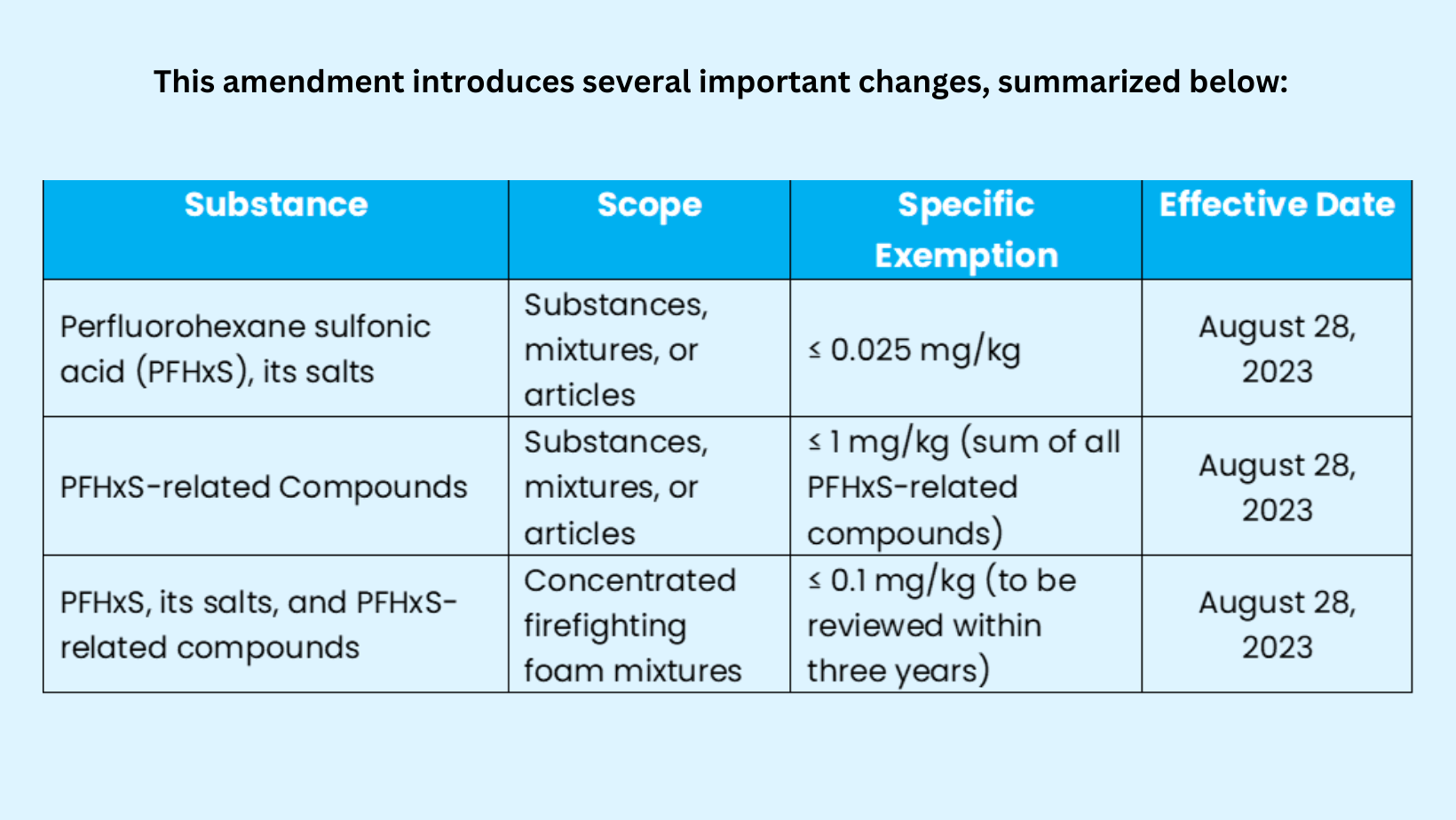Table of Contents
The European Union has taken a definitive step toward eliminating harmful chemicals from the environment by adding Perfluorohexane Sulfonic Acid (PFHxS), its salts, and PFHxS-related compounds to the Persistent Organic Pollutants (POPs) Regulation (EU) 2019/1021.
This amendment, introduced via Regulation (EU) 2023/1608, entered into force on August 28, 2023, and represents a critical alignment with the Stockholm Convention, where PFHxS was added to Annex A in 2022 for global elimination.
What Changed Under Regulation (EU) 2023/1608?
The amendment updates Annex I Part A of the EU POPs Regulation, banning:
- PFHxS (including any of its branched isomers)
- PFHxS salts
- PFHxS-related compounds — substances that degrade to PFHxS, especially those with the structural element C6F13–S
The restriction applies to substances, mixtures, and articles, unless clearly exempted.
What Products Are Impacted?
PFHxS and its related compounds have been used in:
- Water- and stain-resistant textiles
- Firefighting foams
- Electronics (semiconductors, coatings)
- Chrome plating and specialty surfactants
Manufacturers and importers of electronics, textiles, automotive parts, and coatings must review product formulations and BOMs immediately.
Exemptions Under Article 4
PFHxS use is only permitted under narrow conditions:
- Intermediate use in a closed system, with no environmental release
- Laboratory-scale research and development
- Certain legacy articles already on the market (non-intentional presence)
All exemptions require justification and documentation.
Specific Exemption Thresholds
This amendment introduces precise limits for PFHxS, its salts, and related compounds:

These exemption thresholds must be validated through analytical testing and are applicable only where no intentional use exists.
- Intermediate use in a closed system, with no environmental release
- Laboratory-scale research and development
- Certain legacy articles already on the market (non-intentional presence)
All exemptions require justification and documentation.
Enforcement & Supply Chain Obligations
As of August 28, 2023, companies must:
- Eliminate PFHxS and related compounds from all new products
- Screen existing BOMs and supply chains for presence of these substances
- Update technical documentation, SDS, and compliance declarations
- Notify customers and ensure market withdrawals where needed
If PFHxS appears in REACH Candidate List (dual-listed), SCIP notification obligations may apply.
Alignment With Global Rules
This EU restriction mirrors global chemical governance under the Stockholm Convention on Persistent Organic Pollutants, which listed PFHxS in Annex A (elimination) in June 2022. The EU’s regulatory response demonstrates its continued commitment to chemical safety leadership and harmonization.
What Acquis Enables
The Acquis Compliance Platform helps manufacturers:
- Identify PFHxS and related substances across multi-tier supply chains
- Validate against POPs, REACH, RoHS, TSCA, and Prop 65
- Auto-generate updated Declarations of Compliance (DoC)
- Flag SVHC dual-listings and manage SCIP integration
If you're unsure whether PFHxS could be hiding in your upstream parts, Acquis helps uncover the risks before regulators do.
Final Word
The addition of PFHxS to the EU POPs Regulation is not just another chemical restriction, it’s a call to manufacturers to clean house.
Don’t wait until your shipment is flagged or your downstream customer raises the alarm.
Act now. Audit your materials. Update your data. Stay compliant.
Need help screening for PFHxS or other banned POPs?
*Book a demo* with Acquis to see how our platform handles substance flags, supply chain traceability, and regulatory automation, all in one place.
